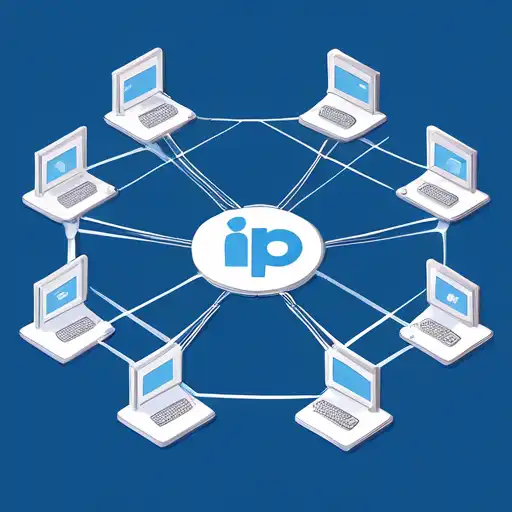Introduction to IP Addresses
In the digital world, an IP (Internet Protocol) address is akin to a home address for your device, allowing it to communicate with other devices on a network. Understanding IP addresses is fundamental for anyone looking to grasp the basics of networking. This guide will walk you through the essentials of IP addresses, their types, and their role in the internet ecosystem.
What is an IP Address?
An IP address is a unique identifier assigned to each device connected to a network that uses the Internet Protocol for communication. It serves two main functions: identifying the host or network interface and providing the location of the host in the network.
Types of IP Addresses
There are two primary versions of IP addresses in use today:
- IPv4 (Internet Protocol version 4): The most widely used version, consisting of four sets of numbers separated by dots (e.g., 192.168.1.1).
- IPv6 (Internet Protocol version 6): Developed to deal with the exhaustion of IPv4 addresses, it uses eight groups of four hexadecimal digits (e.g., 2001:0db8:85a3:0000:0000:8a2e:0370:7334).
How IP Addresses Work
When you attempt to access a website, your device uses the website's IP address to locate and connect to the server hosting the site. This process is facilitated by DNS (Domain Name System), which translates human-friendly domain names into IP addresses.
Public vs. Private IP Addresses
IP addresses can be categorized based on their accessibility:
- Public IP Addresses: Assigned by your ISP (Internet Service Provider), these are visible on the internet and unique across the entire web.
- Private IP Addresses: Used within private networks (like your home or office network), these addresses are not routable on the internet.
Static vs. Dynamic IP Addresses
IP addresses can also be classified based on their assignment method:
- Static IP Addresses: These remain constant, making them ideal for hosting websites or services.
- Dynamic IP Addresses: Assigned by a DHCP server, these can change over time and are commonly used for residential internet connections.
Why Understanding IP Addresses is Important
Grasping the concept of IP addresses is crucial for troubleshooting network issues, setting up a home network, or pursuing a career in IT. It lays the foundation for more advanced networking topics, such as subnetting and network security.
Conclusion
IP addresses are the cornerstone of internet and network communication. By understanding the different types and functions of IP addresses, you can better navigate the complexities of networking. Whether you're a budding IT professional or just curious about how the internet works, mastering the basics of IP addresses is a step in the right direction.
For more insights into networking basics, check out our guide on Understanding DNS and how it works hand in hand with IP addresses to keep the internet running smoothly.
